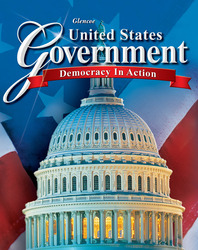United States Government: Democracy in ActionUnit 4:
The Judicial BranchBig Idea Activity <a onClick="window.open('/olcweb/cgi/pluginpop.cgi?it=jpg::::/sites/dl/free/0078799821/680642/big_idea.jpg','popWin', 'width=NaN,height=NaN,resizable,scrollbars');" href="#"><img valign="absmiddle" height="16" width="16" border="0" src="/olcweb/styles/shared/linkicons/image.gif"> (10.0K)</a> <a onClick="window.open('/olcweb/cgi/pluginpop.cgi?it=jpg::::/sites/dl/free/0078799821/680642/big_idea.jpg','popWin', 'width=NaN,height=NaN,resizable,scrollbars');" href="#"><img valign="absmiddle" height="16" width="16" border="0" src="/olcweb/styles/shared/linkicons/image.gif"> (10.0K)</a>
Does the judicial branch function effectively?
Assignment: Supreme Debate
Debate an issue utilizing Supreme Court procedures to argue and clarify your case. Assignment Task List
Step 1: Explain the functions of the federal courts. Complete a chart like the one below with the names and functions of the Article I and Article III courts. Courts | Functions | Article III (constitutional) Courts | | | | | | | | | | | Article I (legislative) Courts | | | | | | | | | | | | |
Step 2: Identify the jurisdiction of federal courts in general, and the original and appellate jurisdiction of the Supreme Court. Step 3: Trace the steps involved in appealing a case to the Supreme Court and the steps Supreme Court justices follow when deciding cases. Complete Guided Reading Activity 12-1. Step 4: Read the summary of the Supreme Court case on page 25 of your textbook. What is the name of the case? What question did it involve? How was the case decided? Step 5: Listen to the case identified in Step 4 being argued in the Supreme Court. Click on the link below to hear the audio version of the oral arguments. OYEZ: U.S. Supreme Court Media
Click on "Oral Argument" under the heading "Media Items." Step 6: Summarize in a paragraph your impressions of the way the case was presented. Were you surprised by the interaction of the attorneys and the justices in the oral arguments? Why or why not? Provide a specific example of how the justices narrowed the issues. Step 7: Organize into groups of six as described below. Research your assigned topic. Prepare to deliver a 10-minute argument for your assigned position on the issue. In addition, prepare rebuttals for the opposing side's arguments. Use existing cases or specific constitutional rights to support your arguments and rebuttals.
- Group A debates changing the national legal driving age to 18 years. Three students are for the proposal, and three students are against it.
- Group B debates two-year mandatory military service for all U.S. citizens ages 18 to 20. Three students are for the proposal, and three students are against it.
- Group C debates a gang ordinance requiring that no more than three teenagers group together in public. Three students are for the proposal, and three students are against it.
- Group D debates mandatory six-month juvenile detention for students found guilty of harassment (bullying). Three students are for the proposal, and three students are against it.
|
Step 8: Conduct the debates in the manner of Supreme Court oral arguments. Your teacher will provide further details.
Step 9: Self-Assessment Rate your involvement in the debates. An exemplary debate will demonstrate the following:
___ detailed research that shows a deep understanding of the subject
___ multiple sources used effectively
___ clear, concise, and thought-provoking arguments and rebuttals
___ arguments and rebuttals supported by facts
___ enthusiastic, persuasive arguments
___ speeches within the time constraints
___ group members work well together and share work evenly  <a onClick="window.open('/olcweb/cgi/pluginpop.cgi?it=jpg::::/sites/dl/free/0078799821/680642/big_idea.jpg','popWin', 'width=NaN,height=NaN,resizable,scrollbars');" href="#"><img valign="absmiddle" height="16" width="16" border="0" src="/olcweb/styles/shared/linkicons/image.gif"> (10.0K)</a> <a onClick="window.open('/olcweb/cgi/pluginpop.cgi?it=jpg::::/sites/dl/free/0078799821/680642/big_idea.jpg','popWin', 'width=NaN,height=NaN,resizable,scrollbars');" href="#"><img valign="absmiddle" height="16" width="16" border="0" src="/olcweb/styles/shared/linkicons/image.gif"> (10.0K)</a>
After all of the debates have been completed, use information from this activity to discuss the question: Does the judicial branch function effectively?
 | 

















